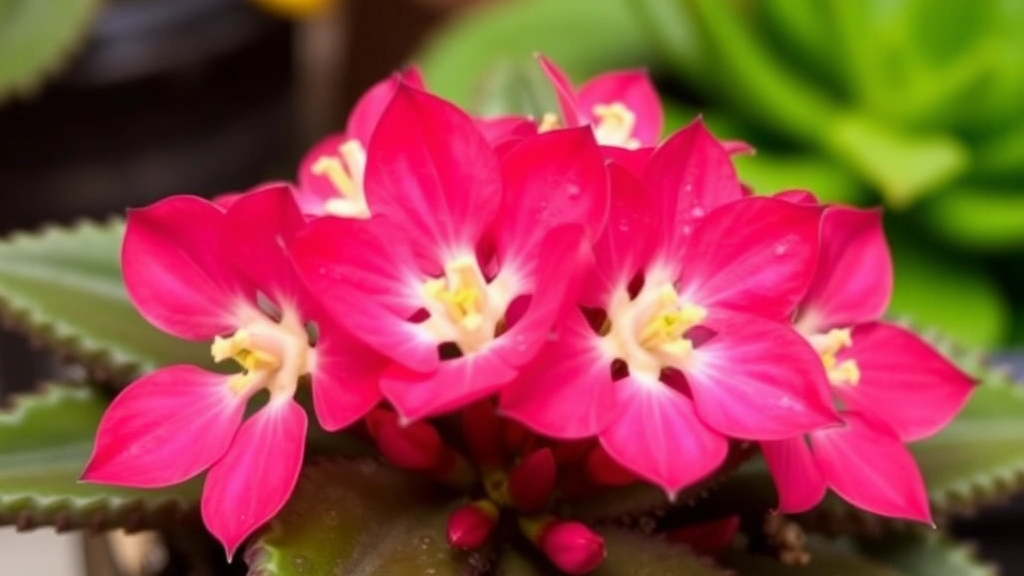Mastering Kalanchoe Paddle Plant Care
Are you looking to master Kalanchoe Paddle Plant care? You’re in the right place! This guide will walk you through everything you need to know about nurturing your paddle plant, from light requirements to dealing with pests. Let’s dive into the essentials of keeping your Kalanchoe thyrsiflora healthy and thriving.
Light Requirements
First, let’s talk about light. Paddle plants love bright, indirect sunlight. Position them near a window where they can soak up plenty of light without getting scorched.
Watering
Next, watering is crucial. These succulents prefer to dry out between waterings, so make sure the soil is completely dry before giving them a good soak. Proper care ensures your paddle plant stays vibrant and beautiful all year round.
Are you struggling to keep your paddle plant thriving? One of the most crucial factors in its care is light.
Paddle plants, or *Kalanchoe thyrsiflora*, thrive in bright, indirect sunlight. Here’s what you need to know:
**Optimal Light Conditions**
– **Bright Indirect Light**: Aim for around 6 hours of bright, indirect sunlight daily. This helps your plant grow lush and vibrant.
– **Direct Sunlight**: While paddle plants can tolerate some direct sunlight, too much can scorch their leaves. A few hours of morning sun is usually safe.
– **Low Light**: If your paddle plant is not getting enough light, it may become leggy and lose its vibrant color.
**Signs of Improper Lighting**
– **Stretched Growth**: If your plant appears elongated, it’s likely reaching for more light.
– **Leaf Discoloration**: Yellowing leaves can indicate too much direct sun, while pale leaves may signal insufficient light.
**Adjusting Light Exposure**
– **Rotate Your Plant**: Regularly rotating your paddle plant helps ensure even light exposure, promoting balanced growth.
– **Seasonal Changes**: Be mindful of seasonal shifts in light intensity. In winter, you may need to move your plant closer to a window.
For more detailed care tips, check out our [Kalanchoe Paddle Plant Care Guide](https://planthq.org/kalanchoe-paddle-plant-care-guide-tips-for-thriving-growth/) and learn how to [fix etiolated Kalanchoe Blossfeldiana](https://planthq.org/fixing-etiolated-kalanchoe-blossfeldiana-lighting-and-care-tips/) for optimal lighting conditions.
Watering Guidelines for Succulents
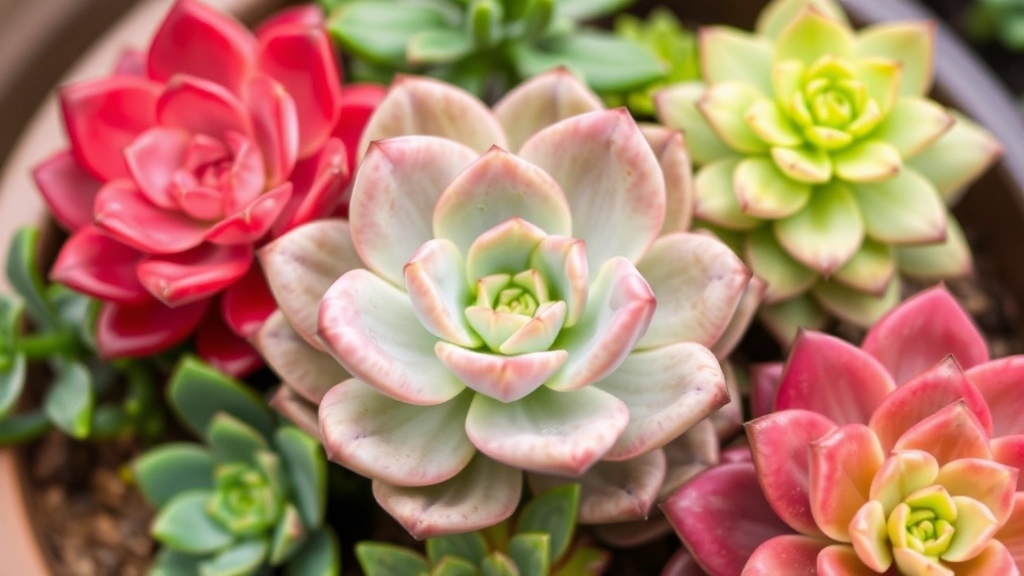
So, you’ve got your paddle plant and you’re wondering how much water it really needs, right? You’re not alone! Many of us worry about overwatering or underwatering our beloved succulents.
Key Watering Tips:
- Check the Soil: Always poke your finger about an inch into the soil. If it’s dry, it’s time to water. If it’s still damp, hold off for a bit.
- Water Deeply: When you do water, give it a good soak. Let the water run through the drainage holes at the bottom of the pot. This ensures the roots get a nice drink.
- Frequency Matters: In the warmer months, you might find yourself watering more often—every 1-2 weeks. In winter, cut back to once a month or even less.
- Seasonal Adjustments: Your paddle plant will need more water during its growing season (spring and summer) and less during its dormant phase (fall and winter).
- Use the Right Method: Bottom watering can be a great way to hydrate your succulent. Just place the pot in a bowl of water and let it soak up what it needs.
Signs of Trouble:
- Overwatering: Yellowing leaves or a mushy stem? That’s a red flag. Cut back on the watering schedule!
- Underwatering: If the leaves are shrivelling or looking wrinkly, it’s time to give your plant a drink.
When it comes to paddle plants, choosing the right soil is crucial for their health and growth. You might be wondering, “What type of soil do paddle plants thrive in?”
### Key Soil Characteristics:
– **Well-Draining:** Paddle plants, like many succulents, prefer soil that allows excess water to escape. This prevents root rot, a common issue for these plants.
– **Sandy or Gritty Texture:** A mix that contains sand or grit helps improve drainage. This mimics their natural habitat, where they grow in arid conditions.
– **pH Level:** Aim for a slightly acidic to neutral pH (around 6.0 to 7.0). This range supports nutrient absorption without causing stress to the plant.
### Recommended Soil Mixes:
– **Cactus Mix:** A commercial cactus potting mix is often ideal. It’s specifically formulated for succulents, ensuring proper drainage.
– **DIY Mix:** You can create your own blend by combining:
– 50% potting soil
– 25% coarse sand
– 25% perlite or pumice
This combination provides the perfect balance of moisture retention and drainage.
### Potting Considerations:
– **Container Choice:** Ensure your pot has drainage holes. This is non-negotiable for paddle plants to thrive.
– **Repotting:** If your paddle plant outgrows its pot, repot it using fresh soil to rejuvenate its growth. For more detailed care instructions, check out our [optimal care guide for Kalanchoe paddle plant](https://planthq.org/optimal-care-guide-for-kalanchoe-paddle-plant/).
Additionally, if you’re interested in other succulent varieties, our [top Kalanchoe succulent varieties and care tips](https://planthq.org/top-kalanchoe-succulent-varieties-and-care-tips/) might be useful.
Temperature and Humidity Needs
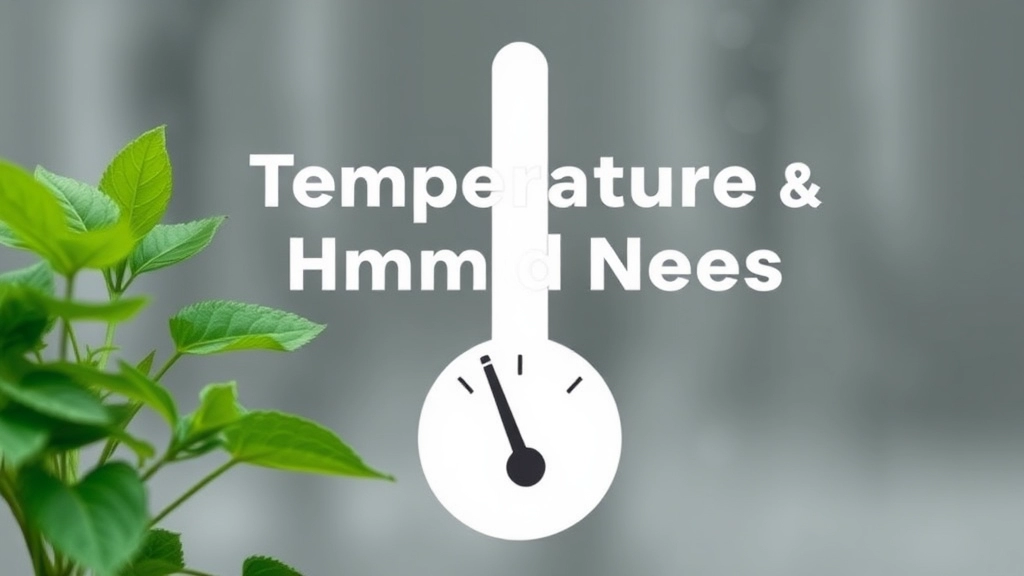
When caring for your paddle plant, understanding its temperature and humidity needs is essential for its overall health and growth.
Optimal Temperature Range
Paddle plants thrive best in a warm environment. Here are some key points to consider:
- Ideal Temperature: Aim for a temperature range of 20°C to 30°C (68°F to 86°F) during the day.
- Nighttime Temperature: At night, temperatures can drop to between 10°C and 15°C (50°F to 59°F).
- Avoid Extremes: Protect your paddle plant from temperatures below 5°C (41°F) as this can cause damage.
Humidity Levels
While paddle plants are quite adaptable, they prefer moderate humidity levels:
- Preferred Humidity: Around 40% to 60% is ideal for optimal growth.
- Dry Air Concerns: If your home is too dry, especially in winter, consider using a humidifier or placing a shallow tray of water near the plant.
Tips for Maintaining Conditions
- Location: Place your paddle plant in a spot that receives bright, indirect sunlight, helping to maintain warmth.
- Avoid Drafts: Keep it away from cold drafts or heat sources like radiators to prevent stress.
- Monitor Conditions: Use a thermometer and hygrometer to keep track of temperature and humidity levels.
Repotting Your Paddle Plant: When and How
Repotting your paddle plant can feel daunting, but it’s essential for maintaining its health and vitality. You might be wondering, âWhen is the right time to repot my paddle plant?â or âHow do I do it without damaging my succulent?â Let’s break it down simply.
Pruning Tips for Healthier Growth
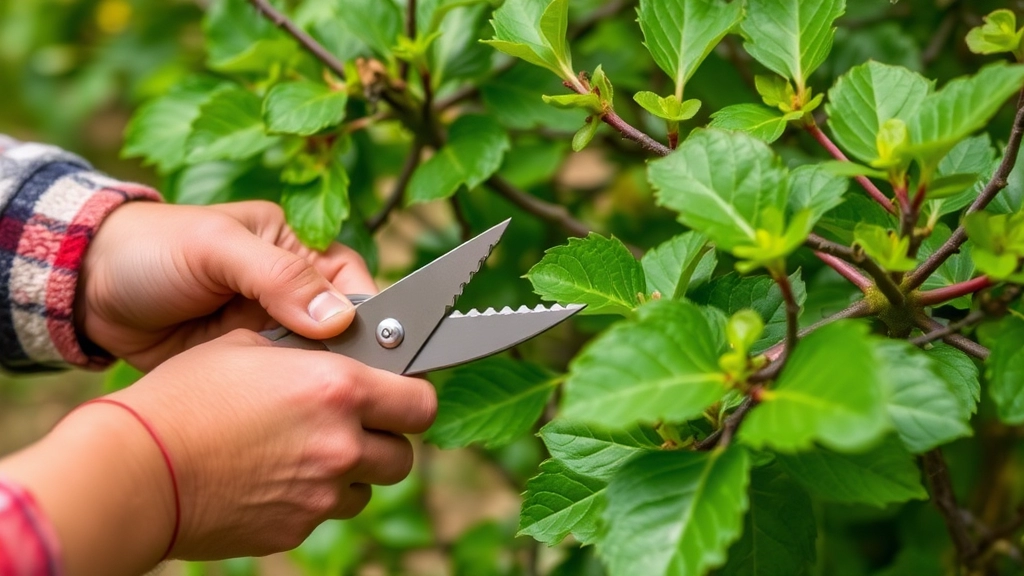
So, you’ve got your paddle plant thriving, but you might be wondering, “How can I keep it looking its best?” Pruning is a game-changer for promoting healthier growth and keeping your succulent in tip-top shape.
Why Prune?
Pruning isn’t just about aesthetics; it encourages new growth and helps manage the plant’s size. Plus, it removes any dead or damaged leaves, which can lead to pests or disease if left unchecked.
When to Prune:
- Spring is the ideal time to prune your paddle plant.
- This is when it’s gearing up for its active growing season.
How to Prune:
Here’s a simple step-by-step guide:
- Gather Your Tools:
- Sharp, clean scissors or pruning shears.
- Rubbing alcohol for sanitizing.
- Inspect Your Plant:
- Look for any dead, yellowing, or damaged leaves.
- Check for overcrowded areas that need thinning.
- Make Your Cuts:
- Snip off unwanted leaves at the base.
- Aim for clean cuts to prevent injury to the plant.
- Sanitize Your Tools:
- Wipe your scissors with rubbing alcohol between cuts to avoid spreading disease.
- Dispose of Debris:
- Remove any cuttings from the pot to keep pests away.
Aftercare:
- Water your paddle plant lightly after pruning.
- Avoid heavy watering for a week to let it recover.
Propagation Techniques: From Leaves or Offsets
When it comes to expanding your collection of paddle plants, you might wonder about the best ways to propagate them.
Propagation Methods
Paddle plants can be propagated effectively through two primary methods: leaves and offsets. Both techniques are straightforward and can yield healthy new plants.
1. Leaf Propagation
- Select Healthy Leaves: Choose mature, healthy leaves from the parent plant.
- Let Them Callous: Place the leaves on a dry surface for a few days to allow the cut ends to callous over. This step is crucial to prevent rot.
- Planting in Soil: After callousing, lay the leaves flat on well-draining soil. You can lightly press them into the soil, but don’t bury them.
- Water Sparingly: Mist the soil lightly, ensuring it remains slightly damp but not soggy.
- Provide Indirect Light: Keep the planted leaves in a spot with bright, indirect light.
2. Offset Propagation
- Identify Offsets: Look for small offsets or pups that grow around the base of the parent plant.
- Gently Separate: Carefully remove these offsets from the parent plant, ensuring you get some roots with them.
- Prepare the Soil: Use a well-draining succulent mix for planting.
- Planting the Offsets: Place the offsets in the soil and lightly firm it around the base.
- Watering: Water the offsets lightly, allowing the soil to dry out completely before the next watering.
Both methods can create new paddle plants, giving you the opportunity to share or expand your collection. For more detailed tips, you can refer to our comprehensive guide on paddle plant care. Additionally, if you’re interested in propagating other types of Kalanchoe, check out our step-by-step guide on propagating Kalanchoe in water.
Common Pests and How to Deal with Them
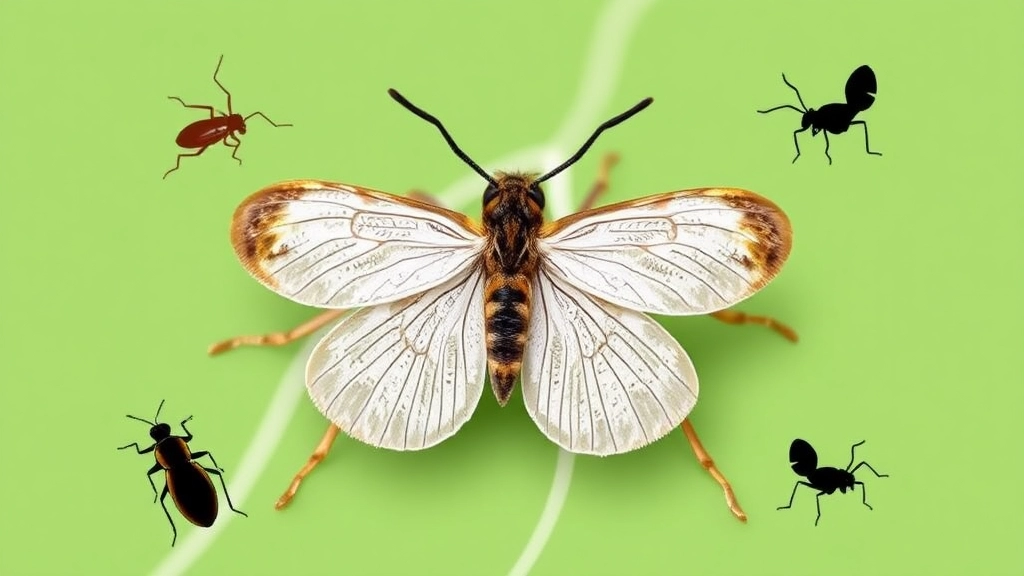
So, you’ve got a thriving paddle plant, but suddenly you notice something’s off. Maybe the leaves are looking a bit sad, or you spot tiny critters lurking around. What gives?
Pests can be a real headache for paddle plant lovers, but don’t fret! Let’s dive into the common pests you might encounter and how to tackle them like a pro.
Common Pests
- Mealybugs
- These little white cottony bugs love to hide in the leaf joints.
- They suck the sap, leaving your plant weak and vulnerable.
- Spider Mites
- Tiny and often invisible, these pests leave fine webbing on your plant.
- They thrive in dry conditions, so keep an eye out!
- Aphids
- Small, green, and sometimes black, these guys can multiply quickly.
- They also suck sap and can cause stunted growth.
- Scale Insects
- Look for small, brown, shell-like bumps on the leaves.
- They’re tough to spot but can be damaging.
How to Deal with Them
- Inspect Regularly
- Check your paddle plant often. Catching pests early makes a world of difference.
- Isolate Affected Plants
- If you spot pests, move the affected plant away from others to prevent spreading.
- Natural Remedies
- Soap Spray: Mix water with a few drops of dish soap and spray on the pests. Rinse after a few hours.
- Neem Oil: A natural pesticide that’s effective against many pests. Just dilute and spray.
- Manual Removal
- For larger pests, like mealybugs, use a cotton swab dipped in alcohol to wipe them away.
- Maintain Healthy Conditions
- Keeping your paddle plant healthy makes it less attractive to pests. Ensure proper light, watering, and soil conditions.
Preventing and Treating Fungal Diseases
As we delve deeper into ensuring your paddle plant thrives, it’s crucial to address one of the most common concerns: fungal diseases. These pesky issues can arise from various factors, including overwatering and poor air circulation.
Recognising Fungal Diseases
Fungal diseases often manifest through:
- Discolouration: Yellow or brown spots on leaves.
- Wilting: Leaves may appear limp or droopy.
- Mould Growth: A white or grey fuzz on the soil or plant.
If you notice any of these signs, it’s time to take action.
Prevention Strategies
Preventing fungal diseases is far easier than treating them. Here are some straightforward tips:
- Water Wisely: Allow the soil to dry out completely between waterings. Overwatering is a primary culprit.
- Improve Air Circulation: Ensure your paddle plant has enough space around it. A well-ventilated area reduces humidity around the leaves.
- Use Well-Draining Soil: A soil mix designed for succulents helps prevent water retention.
- Avoid Wet Leaves: Water at the base of the plant to keep the foliage dry.
Implementing these strategies can significantly reduce the risk of fungal infections.
Treatment Options
If you find your paddle plant has succumbed to a fungal disease, don’t despair. Here’s how to treat it:
- Remove Affected Parts: Cut away any infected leaves or stems with sterilised scissors.
- Adjust Watering: Reassess your watering routine. Ensure you’re not watering too frequently. For more detailed tips, check out our Kalanchoe Paddle Plant Care Guide.
- Fungicide Application: Use a fungicide specifically designed for succulents. Follow the instructions carefully for effective results. You can also explore our Ultimate Guide to Kalanchoe Flapjack Care for additional advice.
By taking these steps, you can restore your paddle plant to health.
Fertilizing Your Paddle Plant for Optimal Growth
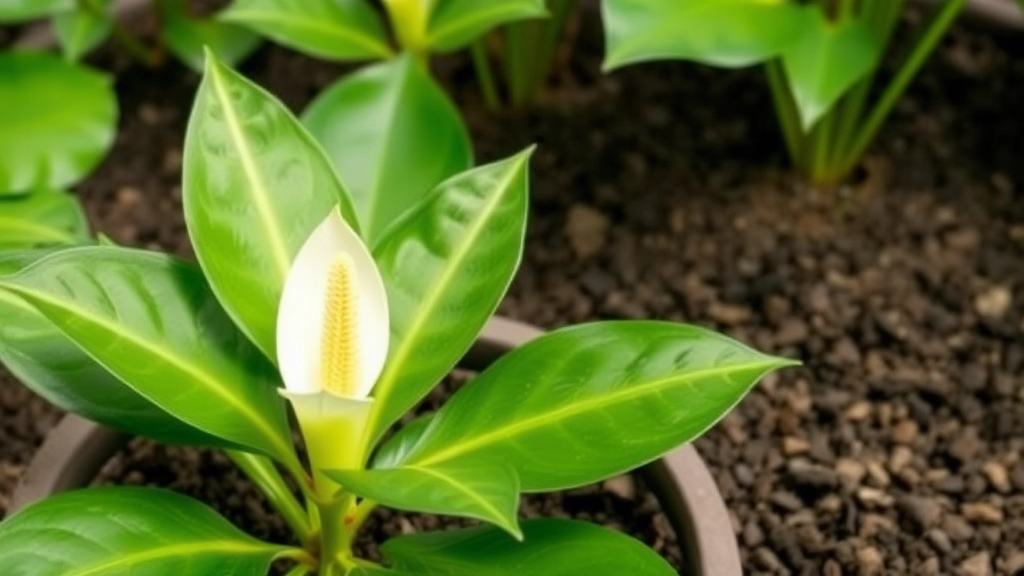
So, you’re wondering how to keep your paddle plant thriving, right?
Fertilizing is a key part of that puzzle.
When to Fertilize
- Growing Season: The best time to fertilize your paddle plant is during its active growing season, which is usually spring and summer.
- Frequency: Once a month is generally enough.
What to Use
- Balanced Fertilizer: Look for a balanced, water-soluble fertilizer with an NPK ratio like 10-10-10.
- Dilution: Always dilute it to half strength. Paddle plants are sensitive to over-fertilization.
How to Apply
- Water First: Before applying fertilizer, water your plant. This helps prevent root burn.
- Even Distribution: Use a watering can to evenly distribute the diluted fertilizer around the base of the plant.
- Avoid Leaves: Try not to get fertilizer on the leaves, as this can cause damage.
Signs of Over-Fertilization
- Brown Leaf Tips: If you notice brown tips on your leaves, you might be overdoing it.
- Stunted Growth: Too much fertilizer can actually stunt growth.
Benefits of Fertilizing
- Nutrient Boost: Fertilizing gives your paddle plant the nutrients it needs to grow strong and vibrant.
- Enhanced Colour: A well-fed paddle plant often has richer colours and a healthier appearance.
Seasonal Care Adjustments (Spring, Summer, Winter)
Caring for your paddle plant throughout the seasons is crucial for its growth and vitality. Each season brings unique challenges and opportunities for nurturing these beautiful succulents.
Spring: Awakening Growth
As spring arrives, your paddle plant will start to wake from its winter dormancy. This is the perfect time to assess its needs.
- Light: Increase exposure to bright, indirect sunlight.
- Watering: Begin watering more frequently as the plant starts to grow. Ensure the soil dries out between waterings.
- Fertilizing: Apply a diluted succulent fertilizer every 4-6 weeks to encourage new growth.
Summer: Thriving Conditions
Summer is when your paddle plant will truly flourish. However, it requires some adjustments to cope with the heat.
- Light: Ensure it gets plenty of bright light, but avoid harsh afternoon sun which can scorch the leaves.
- Watering: Water more often, as the heat can dry out the soil quickly. Check moisture levels regularly.
- Humidity: Maintain a moderate humidity level; if indoors, consider a pebble tray with water.
Autumn: Preparing for Dormancy
As temperatures begin to drop, it’s essential to prepare your paddle plant for the cooler months ahead.
- Light: Gradually reduce direct sunlight exposure as days shorten.
- Watering: Decrease watering frequency, allowing the soil to dry out more thoroughly.
- Fertilizing: Stop fertilizing by late autumn to let the plant rest.
Winter: Rest and Recovery
Winter is a time of dormancy for paddle plants, requiring minimal care.
FAQs on Kalanchoe Paddle Plant Care
How often should I water my Kalanchoe paddle plant?
Watering frequency depends on the season. During the warmer months, water every 1-2 weeks. In winter, reduce watering to once a month or even less. Always check the soil before watering; if it’s dry about an inch deep, it’s time to water.
What are the signs of overwatering and underwatering?
Overwatering: Look for yellowing leaves or a mushy stem. Underwatering: The leaves will appear shriveled or wrinkly.
What temperature range is best for my paddle plant?
Paddle plants thrive in a temperature range of 20°C to 30°C (68°F to 86°F) during the day and 10°C to 15°C (50°F to 59°F) at night. Avoid exposing them to temperatures below 5°C (41°F).
How do I maintain the right humidity for my paddle plant?
Paddle plants prefer moderate humidity levels of around 40% to 60%. If your home is too dry, especially in winter, consider using a humidifier or placing a shallow tray of water near the plant.
When and how should I prune my paddle plant?
Spring is the ideal time to prune. Use sharp, clean scissors or pruning shears to remove dead, yellowing, or damaged leaves. Always sanitize your tools with rubbing alcohol between cuts to prevent disease spread.
What are common pests that affect paddle plants, and how do I deal with them?
Common pests include mealybugs, spider mites, aphids, and scale insects. Regularly inspect your plant, isolate affected plants, and use natural remedies like soap spray or neem oil. For larger pests, manual removal with a cotton swab dipped in alcohol is effective.
When should I fertilize my paddle plant, and what type of fertilizer should I use?
Fertilize during the active growing season (spring and summer) once a month. Use a balanced, water-soluble fertilizer with an NPK ratio like 10-10-10, diluted to half strength. Water your plant before applying fertilizer to prevent root burn.
What are the signs of over-fertilization?
Signs of over-fertilization include brown leaf tips and stunted growth. Always dilute the fertilizer to avoid these issues.
What are the benefits of fertilizing my paddle plant?
Fertilizing provides essential nutrients, promotes stronger and more vibrant growth, and enhances the plant’s overall color and appearance.
References
-
How to Water Succulents: The Essential Guide
-
Watering Succulent Plants: Tips and Tricks
-
How to Care for Succulents
